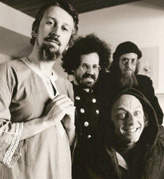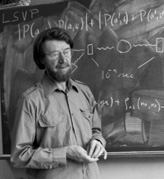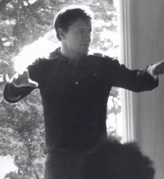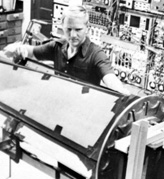
Quantum encryption, quantum computing, and quantum teleportation are among the hottest topics in physics and engineering today.
Yet many of the core ideas once found their home amid an anything-goes counterculture frenzy—a mishmash of spoon-bending psychics, Eastern mysticism, LSD trips, and CIA spooks chasing mind-reading dreams. How the Hippies Saved Physics describes the field’s bumpy transition from New Age to cutting edge.
 New Realities
New Realities
For physicists, the 1970s were a difficult time. Jobs became scarce, research funds dried up, and students no longer flocked to the subject. Caught off-guard as physicists’ postwar boom years turned to bust, a small group banded together to carve out a new role for the physicist. Holding Ph.D.s from elite programs but with no job prospects in sight, they set up shop in Berkeley, California, and called themselves the “Fundamental Fysiks Group.” They chased the mysteries of quantum theory amid the Bay Area’s blossoming counterculture and New Age movements, and their investigations began to reflect the era’s many enthusiasms.
 New Topics
New Topics
One topic in particular caught the group’s attention: a little-known paper by physicist John Bell. Bell proved that quantum theory required what Einstein had once dismissed as “spooky actions at a distance”: tickle a particle here, and its partner will be affected—instantaneously—no matter how far away the second particle had moved. Members of the Fundamental Fysiks Group were among the earliest and most prolific authors on Bell’s theorem, dominating worldwide publications on the subject before the topic entered the mainstream. To some group members, Bell’s theorem and the spooky quantum entanglement (or nonlocality) at its core suggested possibilities for mind reading and other psychic feats.
 New Patrons and Forums
New Patrons and Forums
The Fundamental Fysiks Group carved out a parallel universe, outside academia, and parlayed their interest into a widespread cultural phenomenon. They cultivated a new set of patrons, from the CIA to self-made entrepreneurs of the California “human potential” movement. They also established alternative forums in which to puzzle through the foundations of quantum theory, including a long-running seminar series at the Esalen Institute in Big Sur, California. Their popular books became bestselling icons, such as Fritjof Capra’s The Tao of Physics (1975) and Gary Zukav’s The Dancing Wu Li Masters (1979). Items from the group also got picked up in the nation’s physics classrooms, smuggling back in some sustained attention to the foundations of quantum theory.
 New Physics
New Physics
The group’s brainstorming sessions ultimately laid crucial groundwork for today’s quantum information science. Every single demonstration that Bell’s theorem and quantum nonlocality are compatible with Einstein’s relativity came from members of the Fundamental Fysiks Group, or from physicists responding directly to their ideas. Most important became the “no-cloning theorem,” a fundamental new insight into quantum theory that undergirds today’s advances in quantum encryption. The no-cloning theorem was discovered by three groups working independently of each other; they were each responding to a series of thought experiments by members of the Fundamental Fysiks Group, who aimed to harness quantum entanglement to send messages faster than light—and also, as a byproduct, perhaps use quantum theory to contact spirits of the dead. From quantum séances to quantum information science…
Preview the book here. Read excerpts in Scientific American here and here. Read a brief blog post about the book here.
Listen to interviews about the book, courtesy of the BBC’s “Today Programme”; National Geographic Weekend; NPR’s On Point; Illinois Public Radio’s Focus; Wisconsin Public Radio’s Veronica Rueckert Show and To the Best of our Knowledge; Canadian Broadcasting Company Radio’s The Current; WICN; and KNews.
Additional interviews available here: “Physics Central” podcast; Physics World podcast; “New Books in Science, Technology, and Society” podcast; video interviews at the Institute for Quantum Computing, the Cambridge Science Festival, and from Serious Science.
Watch science writers George Johnson and John Horgan discuss the book in their “Bloggingheads.tv” discussion here.
